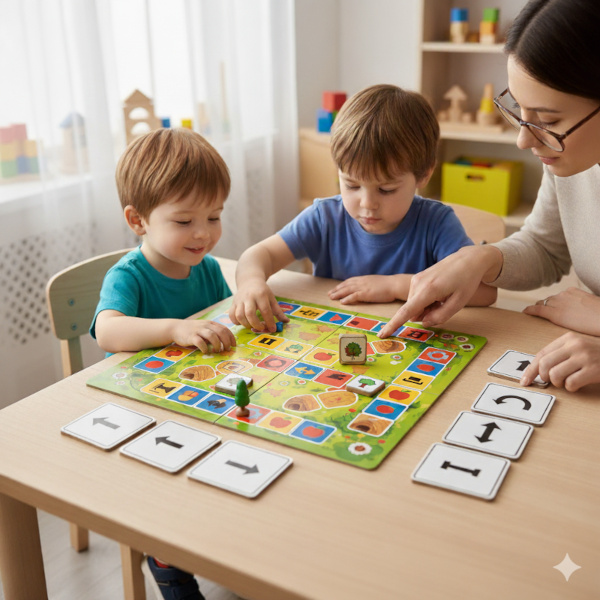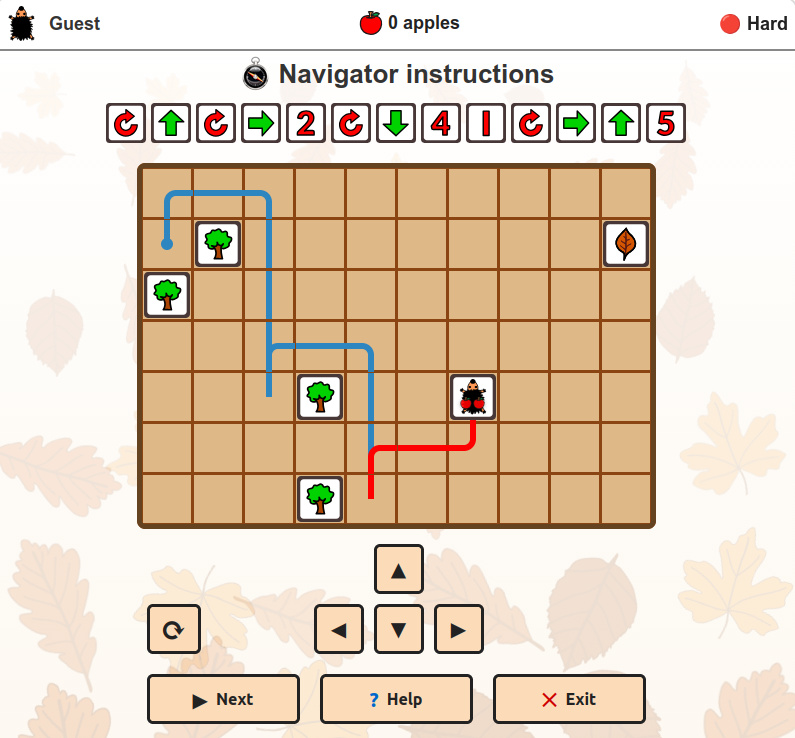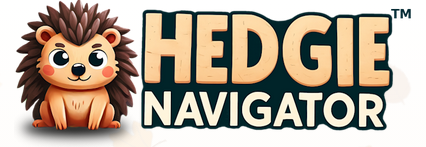In an increasingly digital world, equipping children with foundational logical and algorithmic thinking skills is more crucial than ever. While many might associate these concepts with complex computer programming, the truth is that their building blocks can be effectively introduced through engaging play – even for preschoolers as young as three. Our board game, Hedgie Navigator, does exactly that, transforming abstract ideas into a fun, tactile experience.


Unpacking Logical Thinking with Hedgie Navigator
- Problem Identification: Children quickly learn that their hedgehog needs to get from point A to point B.
- Sequencing: They must determine the correct order of actions (e.g., move forward, turn left, move forward again) to achieve their goal.
- Pattern Recognition: As they play, children begin to recognize efficient paths and anticipate the consequences of certain moves.
- Cause and Effect: “If I move here, then the hedgehog will be closer to the apple.” This direct feedback loop is fundamental to logical understanding.
At its heart, Hedgie Navigator is designed to nurture a child’s natural curiosity and enhance their logical reasoning. Players guide a friendly hedgehog through a maze or along a path, making decisions about the best route to take. This seemingly simple task involves several key logical processes:
Through repeated play, children develop the ability to think critically, plan ahead, and solve problems systematically – skills that are invaluable in all areas of life, from academics to social interactions.
The Dawn of Algorithmic Thinking: Instructions and Loops
Perhaps one of the most exciting aspects of Hedgie Navigator is its subtle introduction to algorithmic thinking. Algorithms are essentially sets of instructions or rules designed to solve a problem. For young children, this translates into understanding and executing sequences of commands, which is a core component of the game.

- Instructions: Players learn to follow specific directives, such as “move forward two spaces” or “turn right.” This reinforces the concept that a series of precise instructions leads to a predictable outcome. They are, in effect, “programming” their hedgehog’s journey.
- Loops (and Repetition): While not explicitly called “loops,” the game naturally encourages repetitive actions. For instance, if a child needs to move three spaces forward, they might verbally or mentally repeat “move forward, move forward, move forward.” This lays the groundwork for understanding that a single instruction can be executed multiple times to cover a longer distance – a fundamental concept in programming loops.
This early exposure demystifies algorithmic concepts, making them feel intuitive rather than intimidating. Children learn that complex tasks can be broken down into smaller, manageable steps, and that repeating actions can be an efficient way to achieve a goal.
Why These Skills Matter: Benefits for Your Child
The benefits of developing logical and algorithmic thinking from an early age extend far beyond excelling at board games or even coding later in life:
- Enhanced Problem-Solving: Children become more adept at tackling challenges, whether it’s figuring out how to build a tower or resolving a conflict with a friend.
- Improved Critical Thinking: They learn to evaluate information, weigh options, and make informed decisions.
- Stronger Academic Foundations: These skills are critical for success in mathematics, science, and even language arts, where understanding sequences and structures is key.
- Boosted Creativity and Innovation: By understanding how things work, children are better equipped to imagine new solutions and create novel approaches.
- Preparation for a Digital Future: In a world increasingly shaped by technology, a basic understanding of how algorithms work provides a significant advantage, fostering digital literacy and resilience.
- Increased Confidence: Successfully navigating challenges in the game builds a child’s self-esteem and encourages them to take on new learning opportunities.
Hedgie Navigator isn’t just a game; it’s a playful learning tool that gently guides young minds into the world of logical and algorithmic thinking. By engaging children in purposeful play, we’re not just entertaining them; we’re providing them with essential cognitive tools that will serve them well throughout their educational journey and beyond. It’s an investment in their future, one step (or paw print) at a time.
